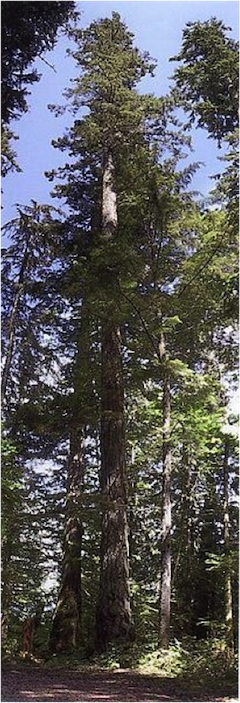Douglas Fir : Overview
By Oliver Scofield
The names Douglas Fir, Oregon Pine, Douglas Spruce and even Washington Fir have all been used for the same tree: Pseudotsuga (which means false hemlock) menziesii. None of them are accurate names however, because this evergreen conifer is neither a true fir, nor spruce, nor pine, nor (as the name implies) hemlock. Douglas-firs (notice the hyphen) belong to their own genus: Pseudotsuga in the family Pinaceae. Despite the horrible confusion in the name, Douglas-firs are an extremely important tree to our culture today and have been used in various forms by Native Americans throughout the west. In North America there are two subspecies: P. menziesii var. menziesii, the coastal giant that lives predominantly in Oregon and Washington; and P. menziesii var. glauca, the smaller, hardier Rocky Mountain dweller. The coastal version is the more common tree and is the typically the image thought of when Douglas-firs are mentioned. In this setting, the once huge tracts of old-growth Doug fir forests were critical to many ecological processes and, although drastically diminished in size, the remaining trees do the same.

